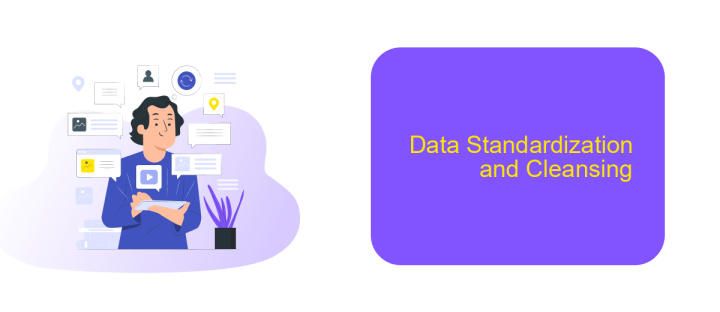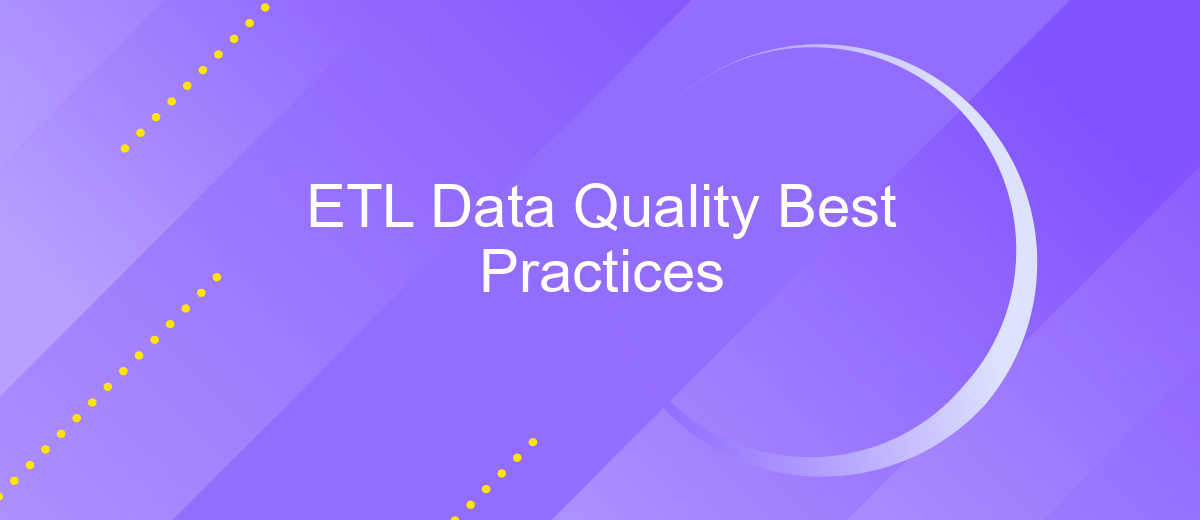ETL Data Quality Best Practices
Ensuring data quality in ETL (Extract, Transform, Load) processes is crucial for accurate analytics and decision-making. Implementing best practices in ETL can significantly enhance the reliability and integrity of your data. This article explores essential strategies to maintain high data quality throughout the ETL lifecycle, from initial extraction to final loading, helping businesses leverage their data assets effectively.
Introduction
In today's data-driven world, ensuring the quality of data through ETL (Extract, Transform, Load) processes is crucial for reliable business insights. ETL data quality best practices help organizations maintain data integrity, accuracy, and consistency as it moves from source to destination. Implementing these practices can significantly enhance decision-making and operational efficiency.
- Data Profiling: Analyze data to understand its structure, content, and quality.
- Data Cleansing: Remove inaccuracies and inconsistencies to ensure data reliability.
- Data Validation: Implement checks to verify data accuracy and completeness.
- Monitoring and Alerts: Continuously monitor data quality and set up alerts for anomalies.
- Documentation: Maintain thorough documentation of ETL processes and data quality metrics.
Leveraging integration services like ApiX-Drive can streamline the ETL process by automating data transfers and ensuring seamless connectivity between various systems. By adhering to these best practices and utilizing advanced tools, organizations can achieve high-quality data that drives informed business decisions and supports overall growth.
Data Validation and Transformation

Effective data validation and transformation are critical components of any ETL process to ensure data quality and integrity. Data validation involves checking the accuracy and quality of source data before it is processed. This can include verifying data types, ensuring mandatory fields are populated, and checking for duplicate or inconsistent data. Automated tools and scripts can be employed to perform these checks efficiently, reducing the risk of human error and ensuring that only clean, accurate data is passed through the ETL pipeline.
Data transformation is the process of converting data from its source format into a format that can be used effectively in the target system. This includes tasks such as data normalization, aggregation, and enrichment. Utilizing integration services like ApiX-Drive can streamline this process by automating the connection between various data sources and the target system. ApiX-Drive offers a user-friendly interface and robust features that allow for seamless data transformation, ensuring that the data is not only accurate but also in the optimal format for analysis and reporting.
Data Profiling and Monitoring

Data profiling and monitoring are critical components in maintaining the quality of your ETL processes. Profiling involves analyzing the data to understand its structure, content, and relationships, ensuring it meets the required standards before integration. Monitoring, on the other hand, continuously checks the data quality during and after the ETL process to identify and rectify any issues promptly.
- Perform initial data profiling to detect anomalies and inconsistencies.
- Set up automated monitoring tools to track data quality metrics.
- Utilize services like ApiX-Drive for seamless integration and monitoring.
- Regularly review and update data quality rules and thresholds.
- Implement alert systems to notify stakeholders of any data quality issues.
By incorporating data profiling and monitoring into your ETL workflow, you can ensure that your data remains accurate, consistent, and reliable. Tools and services such as ApiX-Drive can simplify the integration and monitoring process, providing real-time insights and automated alerts to maintain high data quality standards. Regular reviews and updates to your data quality practices will further enhance the reliability of your ETL operations.
Data Standardization and Cleansing

Data standardization and cleansing are crucial steps in ensuring high-quality data for ETL processes. Standardization involves converting data into a common format, while cleansing focuses on removing inaccuracies and inconsistencies. Both processes aim to improve data reliability and usability.
To achieve effective data standardization, organizations must establish clear guidelines and rules. This includes defining data formats, units of measurement, and naming conventions. Consistent data formats facilitate seamless integration and analysis, minimizing errors and discrepancies.
- Define standard data formats and units of measurement.
- Implement naming conventions for data fields and values.
- Use automated tools for data validation and correction.
- Regularly review and update data standardization rules.
For data cleansing, leveraging automated tools like ApiX-Drive can significantly streamline the process. ApiX-Drive allows for seamless integration and real-time data validation, ensuring data accuracy and consistency. By automating data cleansing tasks, organizations can focus on more strategic activities, enhancing overall data quality and reliability.
Automation and Performance Optimization
Automation plays a crucial role in optimizing ETL processes and ensuring data quality. By automating routine tasks such as data extraction, transformation, and loading, organizations can significantly reduce manual errors and improve consistency. Tools like ApiX-Drive can streamline integrations, allowing for seamless data flow between various systems. This not only enhances efficiency but also ensures that data is up-to-date and accurate, which is essential for maintaining high data quality standards.
Performance optimization is equally important for ETL processes. Efficiently designed ETL workflows can handle large volumes of data without compromising speed or accuracy. Techniques such as parallel processing, incremental loading, and effective indexing can drastically reduce processing time. Monitoring tools and performance metrics should be regularly reviewed to identify bottlenecks and optimize resource usage. By focusing on both automation and performance optimization, organizations can ensure that their ETL processes are not only robust but also scalable and efficient.
FAQ
What is ETL data quality and why is it important?
What are some common ETL data quality issues?
How can I ensure data quality during the ETL process?
What are best practices for monitoring ETL data quality?
How can automation help improve ETL data quality?
Apix-Drive is a simple and efficient system connector that will help you automate routine tasks and optimize business processes. You can save time and money, direct these resources to more important purposes. Test ApiX-Drive and make sure that this tool will relieve your employees and after 5 minutes of settings your business will start working faster.

